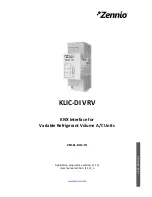
Series KSE/F, KSE-C/F
Page
22
9530-001-en
Revision 19
TM 9549
Edition 11/2018
9.9 Tests
Following the assembly of the valve, the stroke and
the test pressure must be checked.
9.9.1 Stroke
Lift check:
♦
Remove cap nut
927/1
(with KSE / F 100/150 hex.
head screw plug
938/1
) from the lifting cap
535
and determine the height dimension of the spindle
802
up to the upper edge of the lifting cap
535
.
♦
Determine this measurement in both the closed
and fully opened state.
♦
Actuate the lifting lever
238
until the mechanical
travel stop can be felt.
The measurement can be made with a slide calliper
gauge and a depth indicator to DIN 862.
The lift is derived from the difference in the two
heights. It must be at least as high as the lift given in
the test certificate.
9.9.2 Test pressure
This test should take place on a test bench
with a neutral medium such as air or water.
Regarding their suitability and precision, the
pressure gauges must conform to the
requirements of current national regulations
(in Germany: e.g. VdTÜV data sheet "Safety
Valve 100" of the Association of the German
Technical Supervisory Boards).
♦
All pressure tests should be carried out in
compliance with DIN EN 12266-1 or API 527.
♦
It is recommended to perform a bubble test with a
5 mm diameter hose positioned 5 mm below the
surface of water. The other end of the hose is
sealed to the outlet of the valve by means of a
stopper.
♦
To check the test pressure, the pressure in the
valve inlet is slowly increased until the valve com-
mences to open.
♦
To check the reseating pressure, the pressure in
the valve inlet is slowly decreased until the valve is
bubble-tight.
Содержание KSE 100/150
Страница 24: ...Series KSE F KSE C F Page 24 9530 001 en Revision 19 TM 9549 Edition 11 2018 10 2 Sectional drawing KSE F...
Страница 28: ......
Страница 29: ......
Страница 30: ......













































